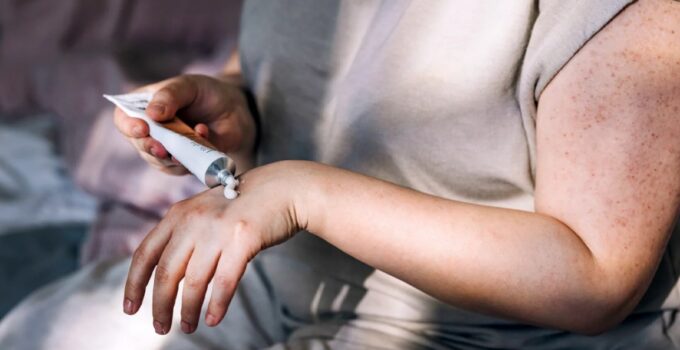Topical steroid withdrawal, or TSW, is a condition that affects individuals who have been using topical steroids for an extended period of time. This condition is characterized by a range of symptoms that can be both physically and emotionally challenging for the individual experiencing them. Understanding the symptoms and treatment options for TSW can help those affected better manage their condition.
TSW is also known as Red Skin Syndrome or Topical Steroid Addiction. It occurs when the body becomes dependent on topical steroids, which are often used to treat skin conditions such as eczema, psoriasis, and dermatitis. Over time, the body may become less responsive to the medication, requiring higher doses or more potent steroids to achieve the same results. This can lead to prolonged use, which can ultimately lead to TSW.
Symptoms
Source: healthline.com
Symptoms of TSW can vary depending on the severity of the condition, the length of steroid use, and the potency of the medication. Common symptoms include red, inflamed, and itchy skin, dryness and flakiness, burning and stinging sensations, and the development of a rash or blisters. Additionally, individuals may experience difficulty sleeping, depression, anxiety, and changes in mood.
Treatment
Source: medicalnewstoday.com
Treatment options for TSW typically involve a combination of supportive care and medication. It is important to work with a healthcare provider who is familiar with it and can provide appropriate treatment recommendations. In some cases, the individual may be prescribed non-steroidal medications to manage symptoms, such as antihistamines or antibiotics. Additionally, moisturizers and other emollients may be recommended to help soothe and hydrate the skin.
In some cases, individuals may need to undergo a process known as “steroid tapering.” This involves gradually reducing the dose of steroids over a period of weeks or months, allowing the body to adjust to lower levels of medication. This can help reduce the severity of TSW symptoms and prevent further complications.
Supportive care is also an important part of managing TSW. This can involve making lifestyle changes, such as avoiding triggers that exacerbate symptoms and adopting a healthy skincare routine. Individuals may also benefit from counseling or support groups to help cope with the emotional toll of TSW.
It is important to note that TSW can be a challenging and frustrating condition to manage, and there is no one-size-fits-all treatment approach. What works for one person may not work for another. It is important to work with a healthcare provider who can provide personalized treatment recommendations based on the individual’s unique situation.
Prevention is also an important consideration when it comes to TSW. While topical steroids can be effective in treating a range of skin conditions, it is important to use them only as directed and for the shortest amount of time necessary. Using too much or for too long can increase the risk of TSW.
Conclusion
In conclusion, TSW is a condition that can be really challenging for those affected. Understanding the symptoms and treatment options can help individuals better manage their condition and improve their quality of life. It is important to work with a healthcare provider who is familiar with TSW and can provide appropriate treatment recommendations. Additionally, taking steps to prevent it by using topical steroids as directed and for the shortest amount of time necessary can help reduce the risk of developing this condition.




